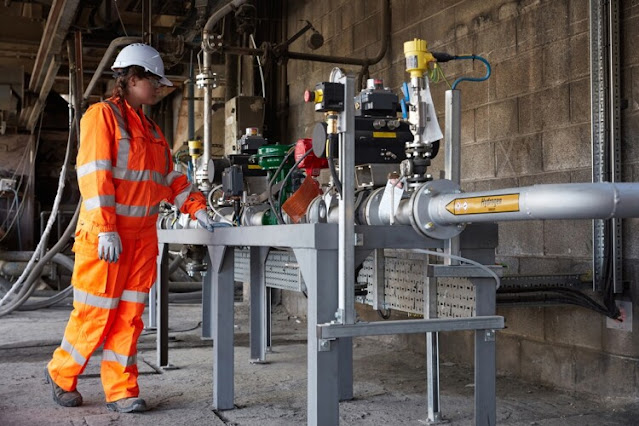Hanson Cement’s Ribblesdale plant in Lancashire has hosted a demonstration of hydrogen fuel being used to produce cement.
The government-backed decarbonisation project shows that energy-intensive cement production might not have to rely on fossil fuels.During the demonstration, a culmination of several years of work, the proportion of fuels in the cement kiln’s main burner was gradually increased to a wholly net zero mix. At a 100% net zero mix, the proportion of fuels in the cement kiln was approximately 39% hydrogen, 12% meat and bone meal (MBM) and 49% glycerine – by-products from the rendering and biodiesel industries respectively.
The fuel switching trial used ‘grey’ hydrogen as a proof of concept but this could be substituted for ‘green’ hydrogen in future as and when availability improves.
If implemented across the whole kiln system at Ribblesdale, nearly 180,000 tonnes of carbon dioxide could be saved each year at this plant compared to using the traditional fuel of coal at the site, Hanson said.
The trail was conducted under the auspices of the Mineral Products Association (MPA). Richard Leese, MPA’s industrial policy, energy and climate change director, said: “Our sector is committed to advancing ground-breaking collaborative research and innovation to meet the industry’s climate change objectives.

No comments:
Post a Comment